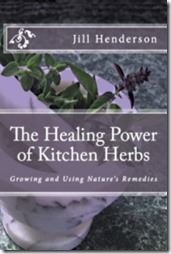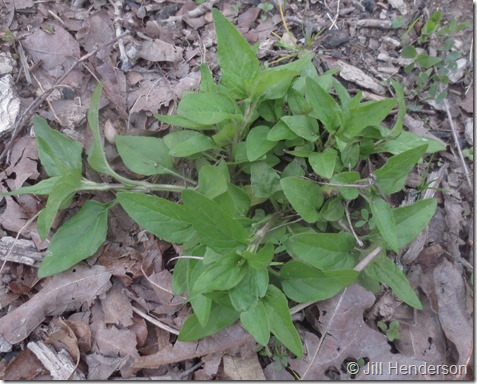 Show Me Oz – Sometimes the best “wild” medicine comes from plants that are decidedly not native, but rather naturalized and occasionally weedy. Plants like these are often considered to be invasive, undesirable weeds in cultivated fields and lawns across North America. And yet, many of these non-natives are incredible edibles and natural healers that foragers and backwoods herbalists should take note of. Dandelions, dock and comfrey are all great examples of naturalized invasive herbs. Another of these weedy invasive plants is a lesser-known little beauty with a plethora of common names, including Heal-All, Self-Heal and All-Heal among many others. And if a name could say it all, this one definitely does.
Show Me Oz – Sometimes the best “wild” medicine comes from plants that are decidedly not native, but rather naturalized and occasionally weedy. Plants like these are often considered to be invasive, undesirable weeds in cultivated fields and lawns across North America. And yet, many of these non-natives are incredible edibles and natural healers that foragers and backwoods herbalists should take note of. Dandelions, dock and comfrey are all great examples of naturalized invasive herbs. Another of these weedy invasive plants is a lesser-known little beauty with a plethora of common names, including Heal-All, Self-Heal and All-Heal among many others. And if a name could say it all, this one definitely does.
I’ll start today’s monograph by telling a short story about my first experience with Heal-All.
Years ago, my husband and I were wrapping up a week-long camping and wildcrafting trip in the wilds of the western Montana Rockies when something of a disaster struck. We had been preparing our breakfast of oatmeal and coffee atop a makeshift grate over a reluctant campfire. Dean had just gone down to the river for water when the flames petered out again. I knelt down and stoked the fire with several deep breaths. When I stood up, the air around me briefly filled with stars and then the lights went out.
I woke a few moments later to Dean’s rousing shouts and the feel of him dragging me. I had fallen across the campfire and the contents of our simmering pots had been disgorged onto my left leg, causing second and third degree burns from the ankle to the knee. Before I fully understood what had happened, Dean had already carried me to the river where he helped me immerse my leg in the blessedly frigid water.
While I worked to gently remove my boots and socks, I asked Dean to gather a few handfuls of a low-growing plant that was growing along the river bank. I had just been telling him about it the day before so he knew exactly which plant I was talking about. Suddenly, the pretty little weed I knew as Heal-All became an emergency treatment for my severe burn.
To use the plant, we masticated the leaves and succulent stems in our mouths (we were in a hurry and there were no open wounds on my leg) and applied the pulp as a poultice to the worst of the burn, which had really begun to throb with pain. Within a few short minutes the pain lessened greatly and I could feel the soothing, cooling emollient action take effect. Throughout my several month ordeal with the burns, I continued to use Heal-All as a soothing, cooling anti-inflammatory that speeds healing.
How to Identify All-Heal
Heal-All (Prunella vulgaris) is a an easily recognizable member of the Lamiaceae or Mint Family of plants, which are notable for their four-sided (square) and sometimes-reddish stems and opposite, lightly toothed and broadly ovate “mint-like” leaves. Like so many mints, Prunella not only produces copious quantities of seed, but has a creeping rhizomatic root system and rooting stems that allow it to spread quickly and effectively, forming loose-knit colonies.
Unlike some mints, Heal-All is low to the ground and is often first represented by a basal rosette of fleshy green stems creeping outward from the center. In early to mid-spring, the stems turn towards the sky and produce a single club-like inflorescence of small, tubular, two-lipped, purple flowers common in the Mint Family.
Heal-All is an industrious opportunist and will grow in many places where a bit of shade can be had, including lawns, meadows, pastures, roadsides, open woods, and forest edges. And while it gravitates towards moist sites, Heal-All isn’t picky and will grow in even the most compacted clay soils.
How to Use Heal-All Medicinally
Long used as an emollient, astringent, anti-inflammatory and vulnerary to heal irritations and ulcers of the skin, mouth, throat, and stomach and to treat digestive disorders such as gastritis, diarrhea, Crohn’s disease, ulcerative colitis, and IBD. The juice from the aerial parts of Heal-All are astringent and routinely used to dry and heal rashes, weeping wounds, insect bites and stings.
The many common and historical uses of Heal-All are now being verified through modern research. We now know that the plant contains a wide array of acid compounds including lauric –, oleanolic –, rosmarinic –, linoleic – and ursolic acid, which is known to be a strong diuretic and antitumor compound. Heal-All has also been found to lower blood pressure and contain natural and powerful antioxidants that are known to prevent free radicals from aging skin and causing skin cancer. Of the 50 mints that were studied, Heal-All proved to have the strongest antioxidant levels.
To use Heal-All, simply cut the desired amount of stems desired to ground level and avoid pulling up the plant as this effectively kills it. Always avoid harvesting Heal-All from roadsides, pastures, agricultural fields and other sites that may be contaminated with herbicides, pesticides, lead or any number of industrial chemicals because Heal-All is known to readily these chemicals from the soil.
Fresh juice can be preserved by mixing it with vodka at a ratio of 75% plant juice to 25% alcohol. The herb can also be dried and either made into a tea for drinking or direct application or tinctured.
Is Heal-All Edible?
According to some wild food foragers, Heal-All is a safe edible either raw or cooked and contains nourishing levels of vitamins A, C and K, as well as thiamine, rutin and various flavinoids. The only drawback is that the fresh plant material tends to leave a bitter aftertaste and a very slight numbing effect that many people don’t find appealing. Steaming or sautéing fresh stems and leaves helps reduce both of those issues.
Before using or consuming Heal-All, be sure you have a positive identification. Many plants share one or more of its common names. Just remember that comparing flowers is one of the most important ways to properly identify unknown plants.
Wild or Cultivated Self-Heal?
Heal-All is a pretty little plant that will coexist happily in lawns and other “waste” places, but it seems to particularly like hard, compacted sites like driveways and former construction sites. It is easily started by seed, rooted stem cuttings or by transplanting root stock in early spring.
Like most mints, Self-Heal can become invasive in lighter soils in ideal conditions, so be careful where you plant it. As a ground cover, it is versatile and pretty, its roots aerate compacted soils and its flowers attract various pollinators including bees, butterflies and hummingbirds. The best place for this vivacious healing herb is in an unkempt area in or at the edges of woods or in the lawn alongside the dandelions. Both can be mowed without injury.
© 2016 Jill Henderson Feel free to share with a link back to the original article.
 The Healing Power of Kitchen Herbs
The Healing Power of Kitchen Herbs
Learn how to grow and use the world’s oldest, safest, and most medicinal herbs with this easy step-by-step guide! From starting seeds to preparing home remedies, The Healing Power of Kitchen Herbs is a treasured resource that you will turn to time and time again.
Available in the Show Me Oz Bookstore.
Look inside!
Jill Henderson is an artist, author, and the editor of Show Me Oz . Her books, The Healing Power of Kitchen Herbs, The Garden Seed Saving Guide and A Journey of Seasons can be found in the Show Me Oz Bookstore. Jill is a contributing author for Acres USA and Llewellyn’s Herbal Almanac and her work has appeared in The Permaculture Activist and The Essential Herbal.
DID YOU LIKE THIS ARTICLE?
Share Subscribe Enjoy!
…and don’t forget to tell your friends you got it from











